1975 Chevrolet Caprice Classic Convertible: Last Call

This was the end of a fine line of glorious full-size Chevrolet convertibles. Oh sure, the Big Caprice would carry on with a square-headlight facelift through 1976, but you could no longer get a convertible. While the well-known 1976 Eldorado convertible was the “last convertible” in 1976 (at least until 1983, when a new topless Caddy appeared on the heels of the new K-car Chrysler convertibles of 1982), 1975 was last call for the Caprice convertible and its Olds 88, Pontiac Grand Ville Brougham, and Buick LeSabre Custom siblings.
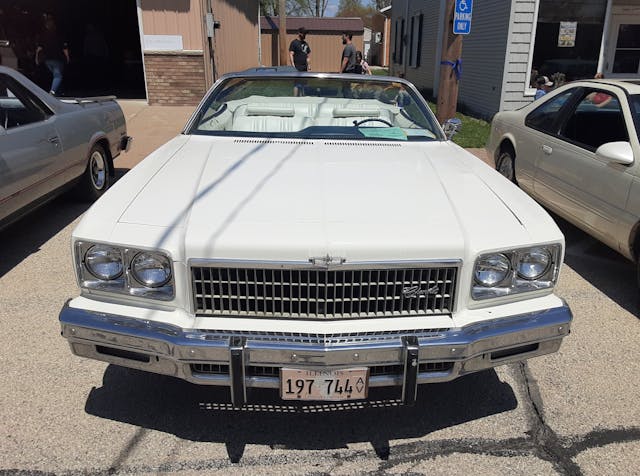
In 1975, the Caprice was the biggest, most luxurious Chevrolet you could buy. Since 1965, the Caprice had out-Broughamed the Impala, first as a custom luxury trim package in 1965 and then becoming a full-fledged model of its own in 1966, with wagons added to the two-door and four-door hardtop models.
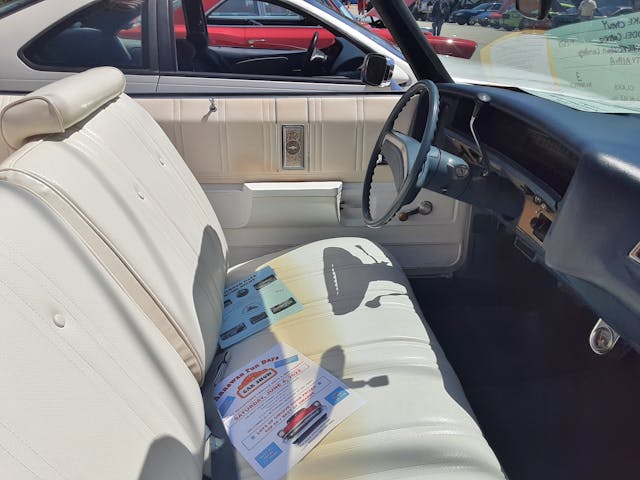
By 1975, you could get your Caprice in two- and four-door pillarless hardtops, a four-door sedan, six- and nine-passenger Caprice Estate Wagons, and the belle of the ball, the Caprice Classic convertible. And today’s featured Caprice looks especially good to me in Antique White with matching white interior with blue dash and carpets. Very nautical. See you on deck, Senator!
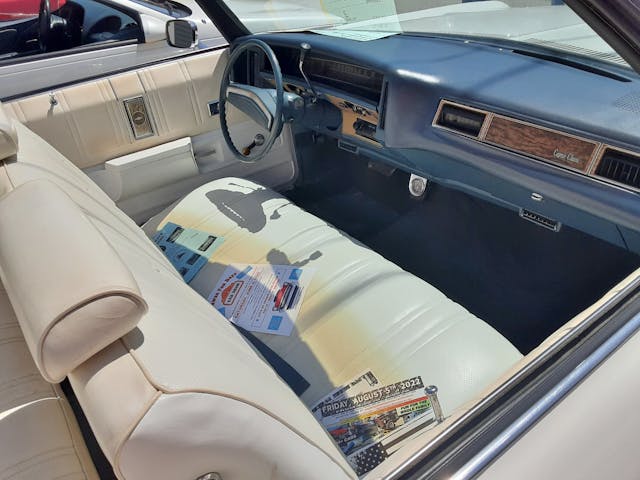
As I’ve mentioned in past columns, convertible sales in the U.S. had been slowly but steadily declining since the late ’60s. There were myriad reasons for this, but the biggest was the increasing popularity (and the corresponding decrease in price) of factory air conditioning. Why endure a drafty convertible top and the related ease of breaking into the car when you could get your Caprice two-door hardtop with factory air?

The production figures tell the story. The 1971 Chevrolets were all-new and bigger than ever and, of course, there was an Impala convertible. This continued for 1972, but then in ’73 the Impala droptop was discontinued and replaced with a Caprice convertible. Production figures for 1971–74 were 4576, 6456, 7339 and 4670.
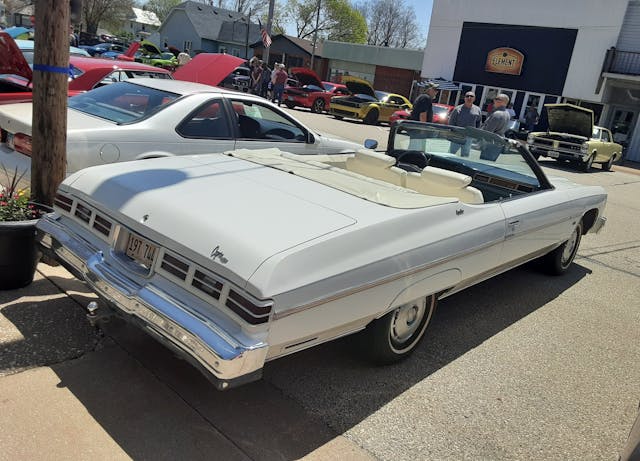
Compare that with a decade earlier, when Impala convertible sales in 1960–63 were 79,903, 64,624, 75,719, and 82,659. Of course, tastes changed a lot from the ’60s into the ’70s, but it still surprises me that the big Chevy convertible couldn’t hit annual production of even 10,000 units in the ’70s (1970 came closest, with 9562).

But I’m getting off track, so let’s get back to the 1975 model. Chevy was a little bit sly about the convertible in its big ’75 brochure: “For those who still favor a convertible, we still offer one, combining the exhilarating effects of a convertible with the elegance of a Caprice.” Nowhere near the “Last chance, so get one now!” seen a year later with the ’76 Eldorado convertibles. Still, it was pretty common knowledge early on that the ’75 Caprice droptop was going to be the last one.
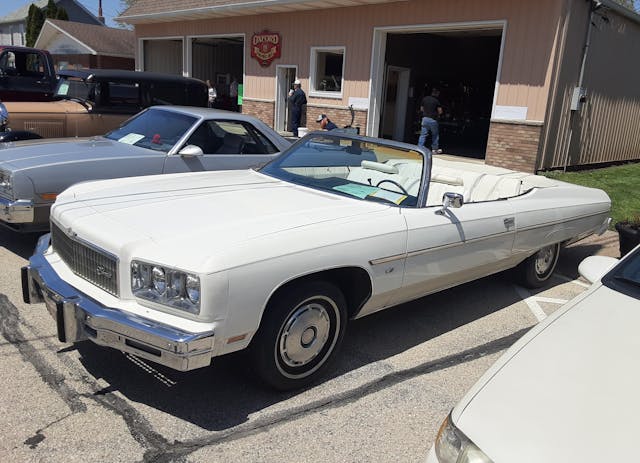
The ’75 Caprice Classic convertible (how’s that for alliteration, ha ha) had a base price of $5113 (about $29,000 today), a not-insignificant sum, as the cheapest new Chevy that year was the two-door Vega sedan at $2786 ($15,800). Curb weight was a majestic 4342 pounds, and a total of 8349 Caprice convertibles were built. Despite all the compact, midsize, and subcompact Chevrolets available in 1975, big Chevys were still popular: just in the top-tier Caprice line, production including the convertible was 103,944. And that was that. Come 1976, the sportiest Caprice Classic you could get was the coupe.
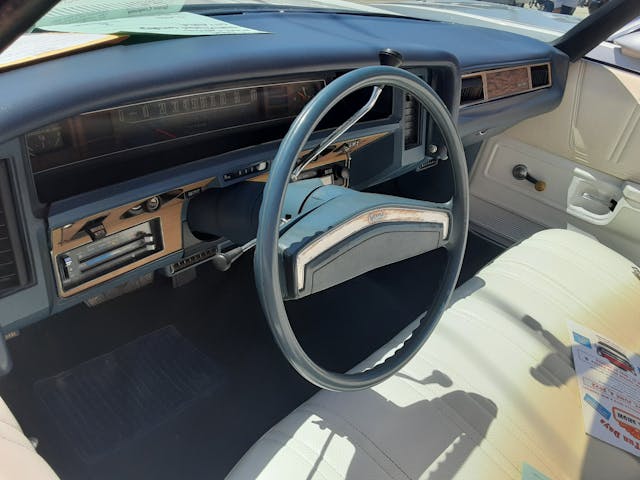
As many of you recall, 2020 and ’21 were bad years for classic car fans, as many shows and cruise nights were canceled due to the pandemic. But as 2022 came along, most (if not all) of them resumed, and I was dedicated to attending as many as I could. I saw this Caprice at the annual car show in Alpha, Illinois, in May 2022. It was the first show of the year that I attended. I’d never been to this particular show before, but it was quite good, with entrants ranging from an early Bronco restored to showroom condition, a 1963 Cadillac convertible, and an early Studebaker Avanti with that amazing factory-correct orange interior. But the one I wanted to cruise home in most of all was this Caprice!

***
Check out the Hagerty Media homepage so you don’t miss a single story, or better yet, bookmark it. To get our best stories delivered right to your inbox, subscribe to our newsletters.


The orange interior Avanti sounds fascinating.
We have convertibles on a few models again of course, though mostly on pricey stuff. I wonder if the breakdown of sales of the “average person” convertibles is even close to the 70s numbers let alone prior when they were seen as the most stylish version to have? If yes, it’s probably Miata, Camaro and Mustang doing it?
My nanna and poppa had a string of convertibles from the mid 50s until the 70s when they went Monte Carlo. The 68 Skylark is one my father still chases… I wish the 59 Pontiac had been stashed in a garage for me.
Love the Caddyshack reference. Not the first pop culture MacGuffin you’ve snuck in, and hopefully not the last.
Of course, Greg Brady and Marcia Brady had a driving skill contest in one of these. Imagine swinging this thing around in the confined spaces of a parking lot.
I wonder if the advent of cheaper A/C really had as much to do with declining convertible sales as increased insurance costs due to rollover and ejection injuries. Having owned a few convertibles, I can also attest that even moving with traffic on a humid summer day with the sun beating down… convertibles can be far more uncomfortable than any coupe or sedan.
I just noticed…this one had the best of both worlds-droptop AND factory A/C. You can tell it’s got factory A/C by the infamous GM “crotch coolers” mounted on the bottom edge of the dash at the driver and front passenger positions.
A CLASSIC the day it was made, This car to me says AMERICA! Large , attainable,and Elegant when I see something like this,it presses all the right buttons.
My Dad’s last car was a white with red vinyl half top 1975 Caprice. My brother-in-law nicknamed it ‘Moby Chevy’. If it had been an Olds or a Buick it would have had a better claim to genuine Broughamage. It was a very nice car but you needed a land grant to park it and a minority stake in ExxonMobil to fuel it.
Being a former Lansingite I prefer the ’71 Delta 88 Royale convertibles. They were the legitimate heirs to the full-sized Oldsmobile mantle. The tragic downsizing and front-wheel-drivage of the 98 series later on sounded the death knell for our beloved Rocket cars.
The early to mid-70s GM large cars were just that. There was very little creativity was there. They were just big. I couldn’t see why anyone would want to buy one of these boring barges. Following the 73 oil crisis was tough for the Big Three, and just as hard for the American car buying public. Ford and Chrysler at least tried to give their Big cars some style, but at the end of the day nobody knew what to do. GM got a little better in 1977, but we were all pretty numb. The 80s were better still, but to be honest we were still in the tailspin caused by the 73 crisis. Frankly, I don’t think we ever fully recovered, even today. I never thought the US auto industry would ever fail. But with the mixed directions stemming from the crisis and the American auto buying public turning its back on the Big Three, that was the end. And for what little American shit boxes that were nothing more than clones of the imports. I never gave up, and I won’t give up on the US Big Three. They once ruled the automotive world, and I believe they will again. But come on, I’m not going to live for ever, and I’m waiting.
I was a teen when these boring barges were just used cars. The back seats were incredibly commodious and, um, inviting.
Sometimes the reasons for purchase are not immediately apparent.
To buy the 1975 Chevy caprice I’m interested what offer price $$$$
How much?? and where at??
Odd to see a blue dash on a white on white. I guess I don’t know if that is factory.
I have a 75 red with white interior and white top. Black dash.
Ask for the 1975 capris glass.
Is this car still for sale
Do yu still have this car
Need parts for 1975 Caprice classic
What is the best price for this car? I would like to buy it.
I wanna buy a converter. 1975 Chevrolet caprice